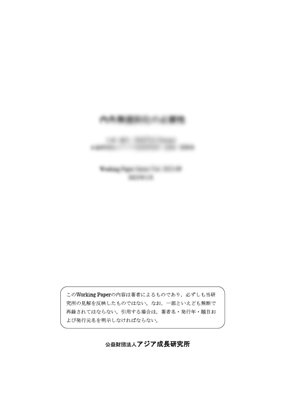Understanding the Puzzle of Primary Health Care Use :Evidence from India

| 執筆者 | Pramod Kumar Sur |
|---|---|
| 発行年月 | 2021年 8月 |
| No. | 2021-04 |
| ダウンロード | 2436KB |
内容紹介
Can a domestic policy implemented by the government in the past help explain the puzzling practice of health care usage today? I study this question in the context of India, where households’ use of primary health care services presents a paradox. A significant fraction of Indian households uses fee-charging private health care services even though most providers have no formal medical qualifications. The private share of health care use is even higher in markets where qualified doctors offer free care through public clinics. Combining contemporary household-level data with archival records, I examine the aggressive family planning program implemented during the emergency rule in the 1970s and explore whether the coercion, disinformation, and carelessness involved in implementing the program could partly explain the puzzle. Exploiting the timing of the emergency rule, state-level variation in the number of sterilizations, and an instrumental variable approach, I show that the states heavily affected by the sterilization policy have a lower level of public health care usage today. I demonstrate the mechanism for this practice by showing that the states heavily affected by forced sterilizations have a lower level of confidence in government hospitals and doctors and a higher level of confidence in private hospitals and doctors in providing good treatment.
